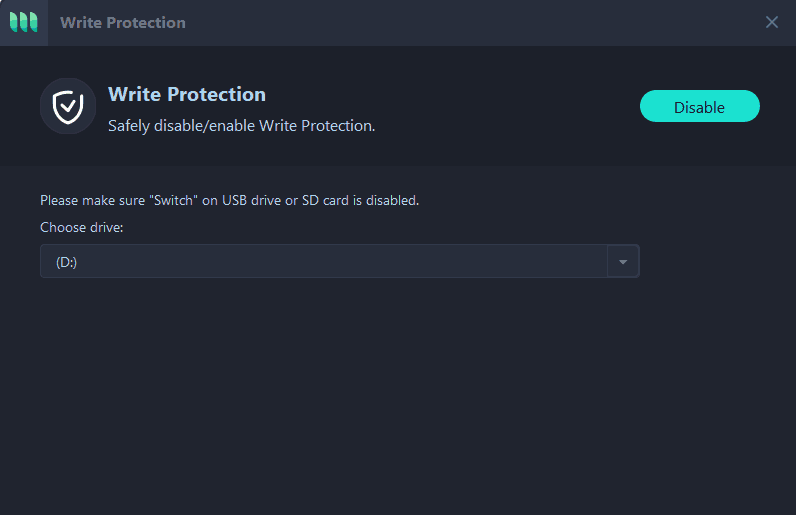
The next step is to navigate to the following path: Double-click the WriteProtect key located in the right side pane and set the value to 0.Dmesg | tail sd 7:0:0:0: Write Protect is onMethod8: Remove write-protect sd/usb/disk with command prompt. This will open the registry editor. Type in regedit and press Enter. To remove the write protection, simply open your Start menu, and click on Run. How To Remove Write Protection on a USB.
Disable Write Protected Usb Code If You
Sd 7:0:0:0: Mode Sense: 23 00 80 00Lenovo Thinkpad X131e Chromebook Disabling Write Protect for Screw / Switch Protection. Our tutorial shows you how to physically enable or disable write protection and also has the registry code if you'd like to see, or make, the changes yourself. Step2: typediskpartin the window and press.Enable or Disable USB Write Protection contains two registry files to enable or disable USB Write Protection (USB Write Access) on your computer.
Checked if it has a hardware switch - no Download Disable or Enable Write Protection - Enable or disable write protected USB devices with just a single click, in order to prevent others from altering the content of a removable drive sd 7:0:0:0: No Caching mode page present sd 7:0:0:0: Assuming drive cache: write through sd 7:0:0:0: Attached SCSI removable disk Open the Administrative Command Prompt.
People had tried opening them and jumping two leads (maybe from a flaky switch?) to no avail. Start End Blocks Id SystemMkfs -t vfat /dev/sdb1 mkfs.vfat 3.0.9 ()After researching your question it appears that this is a not-too-uncommon problem with certain brands of USB flash drives (some older Samsung, a Kingston model) that would essentially just "crap out" for no known reason. Really 911911)/dev/sdb1: 50 files, 93653/1005564 clustersFdisk -l Device boot. Used Google and have seen about 10,000 discussions about this problem but they were never solvedFsck -n /dev/sdb1 fsck from util-linux 2.19.1There are differences between boot sector and its backup.Free cluster summary wrong (968250 vs. Tried to fix this with several tools from Ubuntu software center

I opened the case, shaved some of the plastic casing away to give the PCB some wiggle room and then reflowed the NAND chip to repair the broken solder joints. Rather than doing yet another RMA, I took matters into my own hands. But for this particular model, it seems to have had weak solder joints that the pressure from the sliding action exacerbated - leading to oxidation in the cracked joint and eventual failure.
Set it to writeable again, and remount it at the same place sudo hdparm -r0 /dev/sdb1Now I can write to the disk as my normal user. I don't know why I had to change this flag before AND after mounting, but that's the only way it worked for me. This is what worked :Plug in the card (mine is an SD card with a manual write-protect switch on it, but the switch is off and it is writable on a Windows machine).Ubuntu mounted it automatically on /media/andrew/6AB0-1FD91, and dmesg showed the partition to be /dev/sdb1.Unmount it, and make it writeable sudo umount /dev/sdb1Create a new mount point and mount it there (my userID from /etc/passwd is 1000) sudo mkdir /media/andrew/tempSudo mount -o uid=1000 /dev/sdb1 /media/andrew/tempIt'll still complain that it's read-only.
We can now confirm with dmesg that this worked:Also after issuing a mount command you'll see:/dev/sdb1 on /usb type ext4 (rw,relatime)Now go get your stuff off that disk immediately, it's failing. Here's how we'll reload the kernel module: $ sudo modprobe usb_storage quirks=0781:5583:wReplace the numbers between the colons with the ones your saw in step (1) from above.5) plug the usb storage device back in. Unplug the USB device.3) Remove the usb_storage kernel module (assuming it's compiled as a module) $ sudo modprobe -r $(lsmod | sed -n 's:,: :g s,^usb_storage*,p') usb_storage4) Now we will put the module back in using a quirks mode setting to override the detection of the device's write-only flag.From source/drivers/usb/storage/usb.c#L572 taken from v4.19 you can see that the quirks mode setting we're looking for is w. Here's how it works.1) Plug in the USB device and do an lsusb, example: $ lsusbBus 002 Device 012: ID 0781:5583 SanDisk Corp.2) Take note of those two codes between the colon (called the idVendor and idProduct).


 0 kommentar(er)
0 kommentar(er)
